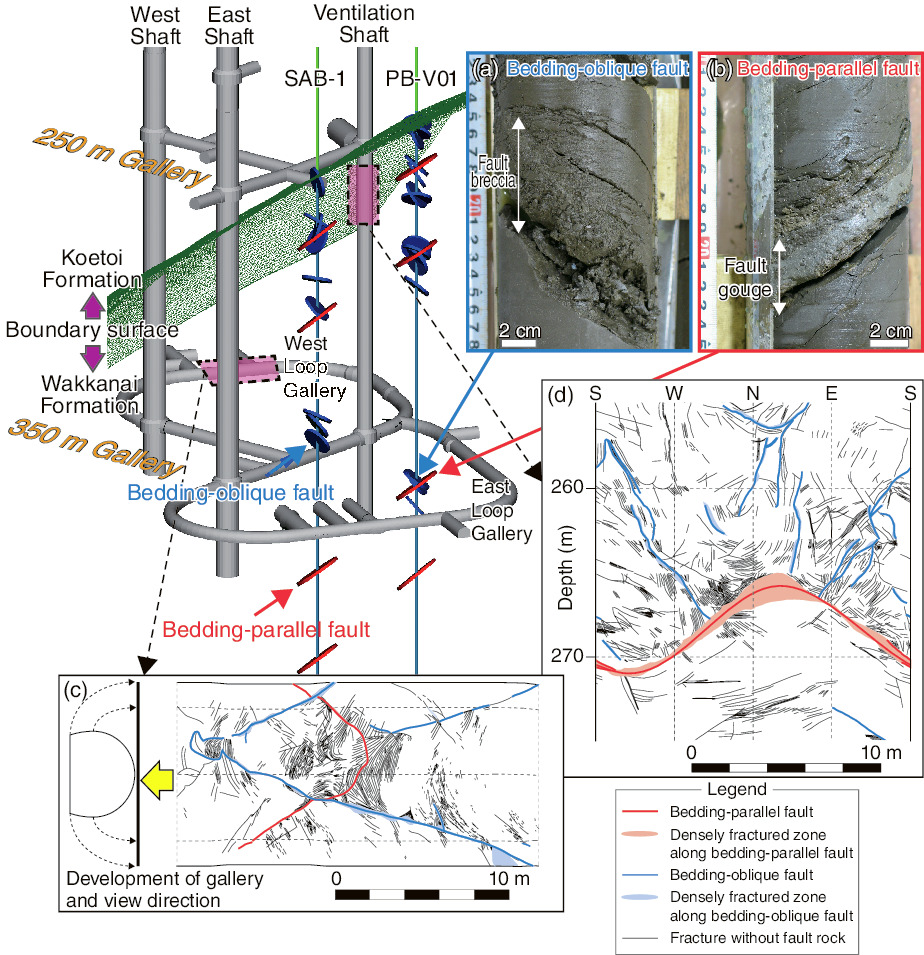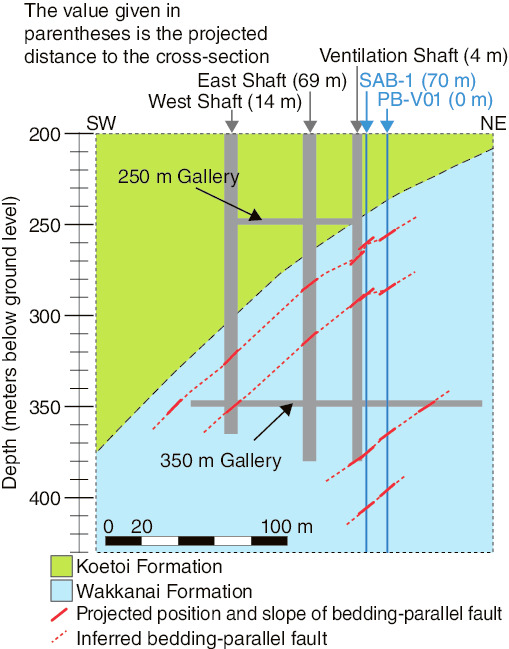
Fig.8-16 Horonobe URL site and faults observed in pilot boreholes SAB-1 and PB-V01

Fig. 8-17 NE-SW trending cross-section of the Horonobe URL
The development of a 3D model that identifies the location, distribution, and relationship of geological structures is important for the design and long-term safety assessment of a repository for the geological disposal of high-level radioactive waste (HLW). The reliability of the model can be improved by identifying faults and fractures from fracture logging of boreholes and fracture mapping on the walls of shafts and galleries as they are excavated.
The deeper parts of the Horonobe Underground Research Laboratory (URL) are located in the Wakkanai Formation, which comprises Neogene massive siliceous mudstones (Fig.8-16). At the Horonobe URL, which is located on the western limb of an anticline, the contact between the Wakkanai and Koetoi formations strikes NW-SE and dips moderately to the west. A number of bedding-oblique faults containing fault breccia (Fig.8-16(a)) and four bedding-parallel faults containing fault gouges (Fig.8-16(b)) have been observed in the Wakkanai Formation from two pilot boreholes (PB-V01 and SAB-1). A bedding-oblique fault that displaced a bedding-parallel fault was observed in the 350-m West Loop Gallery (Fig.8-16(c)) and is consistent with previous assignments of bedding-oblique faults that have formed following bedding-parallel faults. However, bedding-oblique faults were observed in the Ventilation Shaft at depths of 265–271 m that terminate near the bedding-parallel faults (Fig.8-16(d)). Based on the location and orientation of bedding-parallel faults as observed in the boreholes and galleries, four bedding-parallel faults could be identified from depths of 260–410 m (Fig.8-17). We therefore suggest here that the first formed bedding-parallel faults affect the propagation of the latter-stage bedding-oblique faults.
The data collected by fracture mapping on the gallery walls are helpful for greater understanding of the location, distribution, and relations between the bedding-parallel and bedding-oblique faults identified at the Horonobe URL. This helps to improve the reliability of 3D models developed for geological structures.